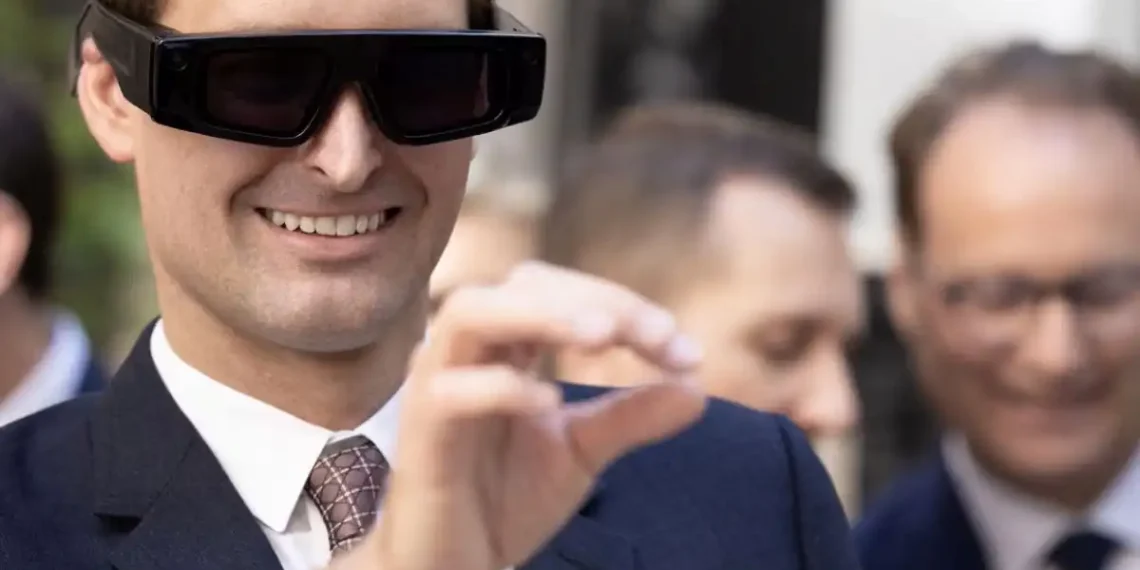Big Tech Bets on Smart Glasses—Again. This Time, AI Might Make It Work
A decade after Google Glass fizzled out, smart glasses are making a comeback—and this time, Silicon Valley is betting big that artificial intelligence will finally make the concept click.
From Google and Meta to Snap and Amazon, major tech firms are racing to develop AI-powered eyewear that can see, understand, and respond to the world around you in real time. The goal? Replace—or at least supplement—the smartphone with something more intuitive, hands-free, and face-forward.
Why Now? Two Major Shifts Are Driving the Hype
There are two main reasons smart glasses are back in the spotlight:
- The smartphone is losing its shine. People aren’t upgrading as often, and innovation has slowed.
- AI has caught up. Today’s AI can handle voice, image, and video inputs simultaneously, making it far more useful in real-world scenarios than it was during Google Glass’ time.
“AI is making these devices a lot easier to use, and it’s also introducing new ways people can use them,” said Jitesh Ubrani, research manager at the International Data Corporation (IDC).
What Today’s Smart Glasses Can Actually Do
Early versions of smart glasses from Google, Snap, Meta, and Amazon focused on basics: taking pictures, listening to music, or offering voice assistance. But they didn’t do anything your phone couldn’t—and they certainly didn’t look cool.
Now, things are changing.
- Meta’s Ray-Ban smart glasses can translate languages in real time or tell you whether a pepper in your hand is spicy.
- Google’s Gemini-powered glasses can remember what you’ve seen and answer questions based on your environment. At a recent developer conference, a Google employee asked Gemini to recall the name of a coffee shop printed on a cup she had looked at earlier.
- Snap’s next-generation Spectacles, expected in 2026, promise AI that can “understand the world around you.”
Even better: Meta said it’s already sold over 2 million pairs of its Ray-Ban smart glasses since their 2023 launch.
The Market Is Set to Boom
After years of misfires, the numbers suggest this time could be different.
- ABI Research forecasts the smart glasses market will grow from 3.3 million units in 2024 to nearly 13 million by 2026.
- IDC expects growth from 8.8 million in 2025 to almost 14 million in 2026, especially among devices like Meta’s Ray-Bans.
“There’s finally now some good concepts of what’s working,” said Andrew Zignani, senior research director at ABI Research.
What’s Coming Next
Snap hasn’t revealed much about its upcoming Specs, but the company made its ambition clear: “The tiny smartphone limited our imagination. It forced us to look down at a screen, instead of up at the world.”
Meanwhile, Apple is rumored to be developing its own smart glasses, and Amazon may follow suit. Panos Panay, Amazon’s devices chief, hinted in February that AI-powered Alexa glasses could be part of the company’s future hardware roadmap.
AI platforms like OpenAI’s ChatGPT and Google Gemini are already prepping for this shift, turning your phone camera into a tool for understanding your surroundings. Even toy maker Mattel is reportedly working with OpenAI to embed similar tech in its products.
But Do People Actually Want Smart Glasses?
That’s the billion-dollar question.
Privacy concerns remain a major hurdle. Google Glass famously flopped in part because people were creeped out by the idea of hidden cameras. Today’s models try to address that by including lights that signal when they’re recording—but that may not be enough to win over the skeptical.
Then there’s the price. Meta’s Ray-Bans cost around $300—not outrageous, but not cheap either, especially as consumers grow cautious about spending on non-essential gadgets. For comparison, global smartwatch sales recently dropped for the first time in years, suggesting wearables may be losing steam.
Another challenge? Convincing people to wear glasses all day—especially those who don’t need prescription lenses.
Still, Tech Giants Are Willing to Bet on the Future
Meta CEO Mark Zuckerberg recently told a federal court that smart glasses—and even holograms—could be central to how we interact with technology in the future.
“Many in the industry believe that the smartphone will eventually be replaced by glasses or something similar,” said Ubrani. “It’s not going to happen today. It’s going to happen many years from now, and all these companies want to make sure that they’re not going to miss out on that change.”
Whether consumers will buy into the vision—or the glasses—is still up in the air. But for now, Big Tech is all-in.
This article was rewritten by JournosNews.com based on verified reporting from trusted sources. The content has been independently reviewed, fact-checked, and edited for accuracy, neutrality, tone, and global readability in accordance with Google News and AdSense standards.
All opinions, quotes, or statements from contributors, experts, or sourced organizations do not necessarily reflect the views of JournosNews.com. JournosNews.com maintains full editorial independence from any external funders, sponsors, or organizations.
Stay informed with JournosNews.com — your trusted source for verified global reporting and in-depth analysis. Follow us on Google News, BlueSky, and X for real-time updates.














